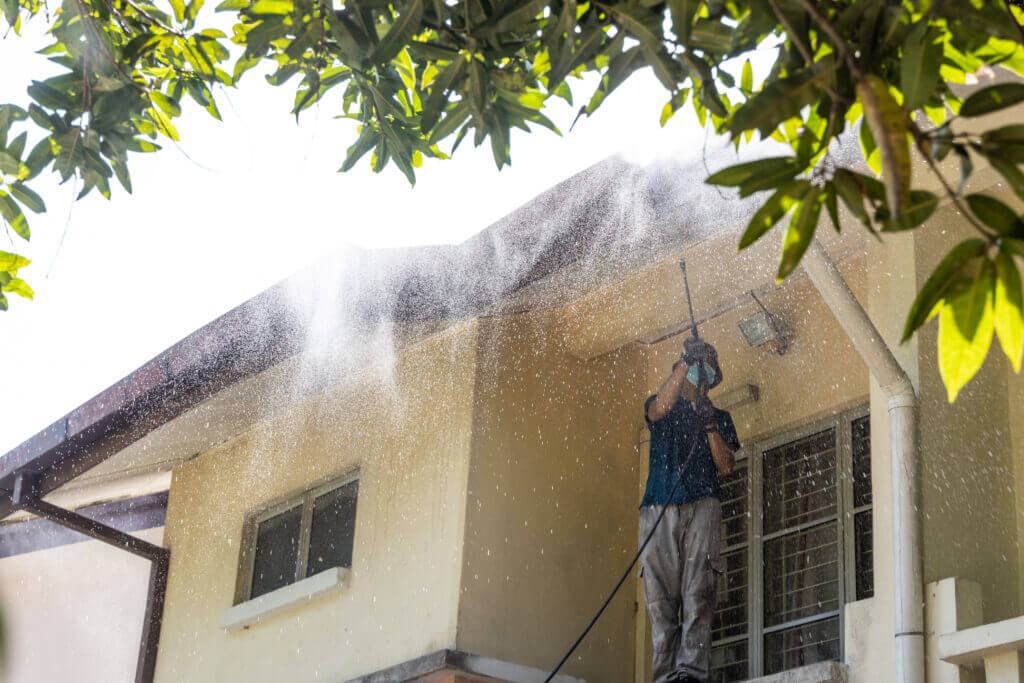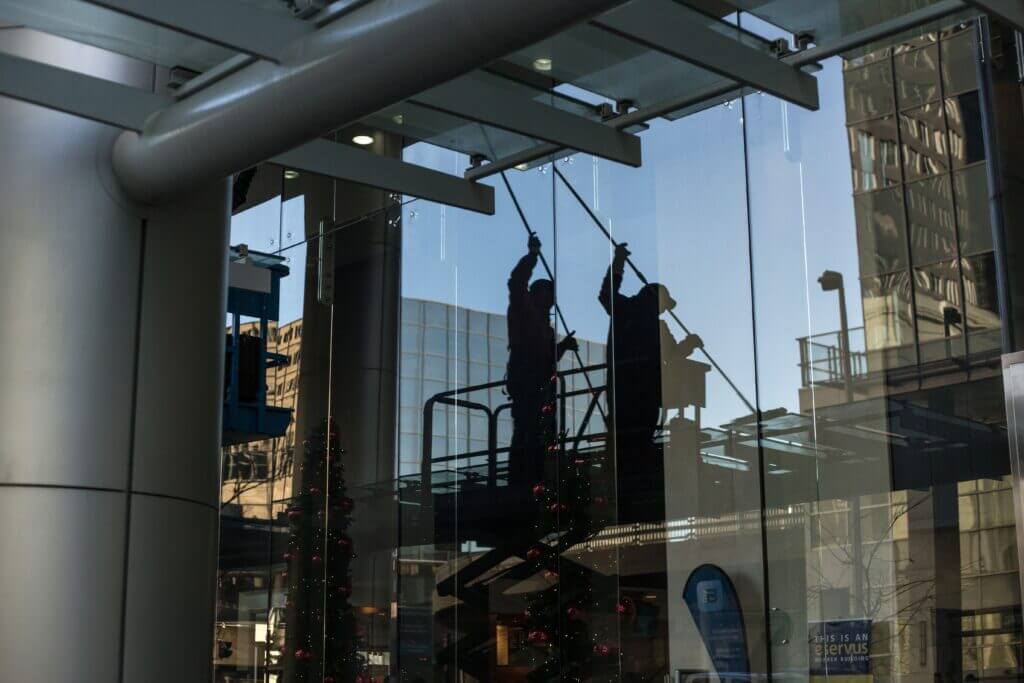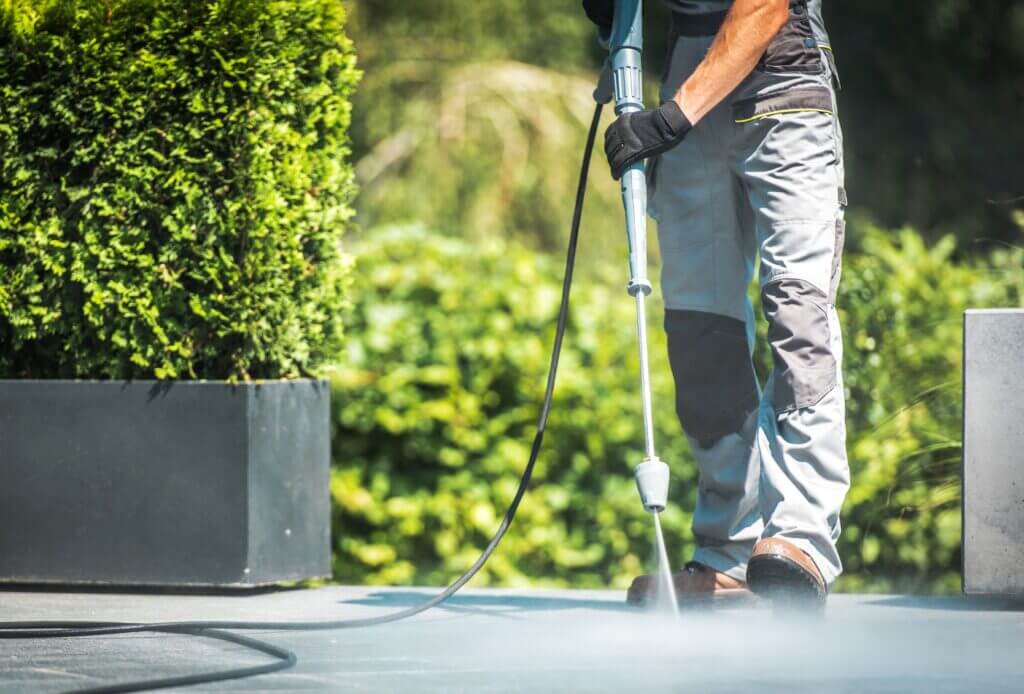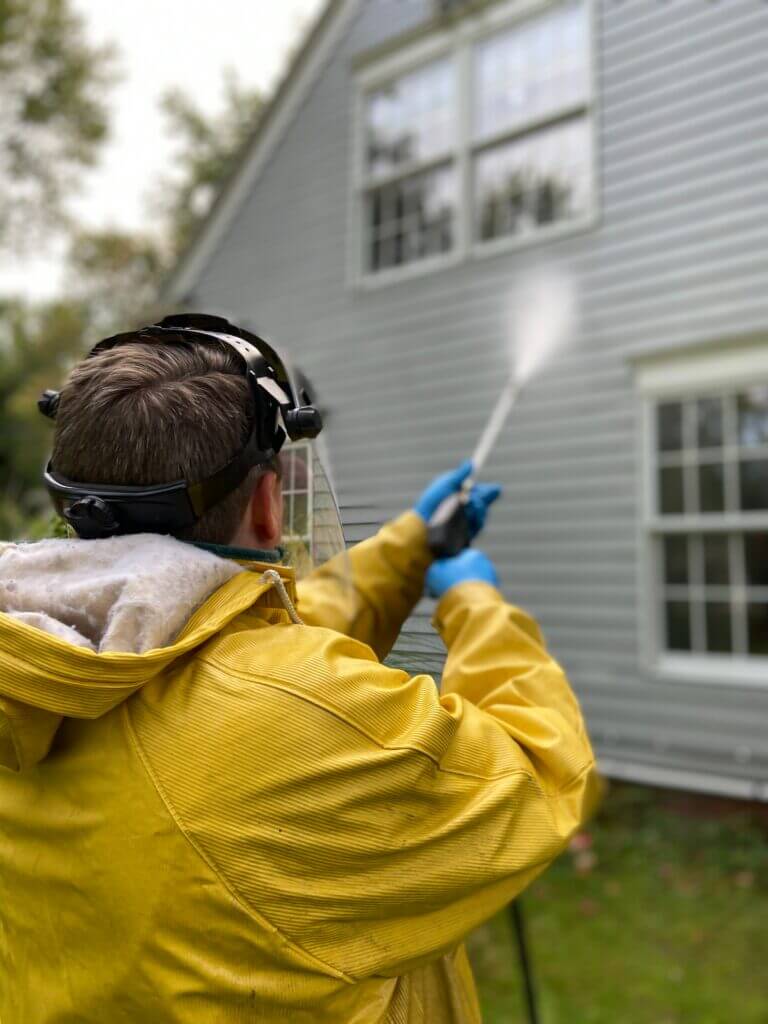How Long After Pressure Washing Can You Paint? Tips and Insights
Introduction
Preparing surfaces before painting is crucial for achieving a flawless finish that lasts. One common question that arises during this process is, “How long after pressure washing can you paint?” In this comprehensive guide, we’ll delve into the factors influencing the waiting time and provide expert tips to ensure your painting project’s success.
Understanding the Waiting Period
After pressure washing a surface, it’s vital to allow ample time for it to dry thoroughly before applying paint. The waiting period varies depending on several factors, including:
Surface Material and Condition
Pressure washing various materials like wood, concrete, or siding yields different results due to their unique properties and compositions. Factors like surface porosity and existing coatings further influence the drying times post-pressure washing, necessitating tailored approaches for effective cleaning and maintenance.
Weather Conditions
Ideal painting conditions typically involve low humidity levels, which facilitate faster drying times and prevent moisture-related issues such as blistering or cracking. Additionally, moderate temperatures help maintain the stability of paint and promote efficient drying. At the same time, good air circulation ensures proper ventilation, aiding in the dispersal of fumes and accelerating the drying process.
Type of Paint and Application Method
The choice of paint type significantly impacts the duration of the drying period, with oil-based paints typically necessitating longer drying times compared to water-based alternatives. Additionally, the method of application plays a crucial role, as spray applications tend to accelerate the drying process due to their ability to create thinner, more uniform layers of paint. Consequently, understanding both the type of paint being used and the chosen application method is essential for effectively managing drying times in painting projects.
Pressure Washing Technique
The intensity of pressure washing plays a crucial role in determining the amount of water absorbed into a surface and the subsequent drying time. Lower pressure settings and maintaining a suitable distance from the surface during pressure washing can significantly reduce water absorption. By adjusting these factors, users can effectively minimize water penetration into porous surfaces, facilitating quicker drying times and preventing potential damage from prolonged moisture exposure.

General Guidelines for Drying Time
Different surfaces require varying drying times post-pressure washing to ensure optimal conditions for painting.
Concrete Surfaces
For optimal results when painting concrete surfaces, it’s recommended to allow a drying period of 24 to 48 hours to ensure thorough drying. This timeframe allows the concrete to cure fully, ensuring proper adhesion and longevity of the paint. Rushing this process may result in poor paint adhesion and premature peeling or flaking of the paint layer.
Wood Surfaces
The drying time for wood can vary significantly based on factors such as ambient weather conditions and the type of wood being dried. Generally, wood requires a period of 24 to 72 hours to fully dry. Still, this timeframe can be extended or shortened depending on the porosity of the wood and the humidity levels in the environment. Higher porosity woods or humid conditions may prolong the drying process, while less porous woods or dry weather conditions can expedite it.
Vinyl Siding and Other Materials
Vinyl siding and similar materials typically dry within 24 hours after installation or cleaning. However, various factors, such as weather conditions and the use of cleaning solutions, can influence the drying time. In adverse weather conditions such as high humidity or low temperatures, drying may take longer, while using specific cleaning solutions may accelerate or impede the drying process.
Importance of Proper Drying Time
Proper drying time is essential for achieving optimal adhesion between the paint and the surface, which is crucial for long-term durability. Rushing the drying process can lead to premature failure of the paint, resulting in peeling, cracking, or poor adhesion. Allowing sufficient time for each coat to dry thoroughly ensures a flawless finish and enhances the overall quality and longevity of the paint job.
Steps to Ensure Adequate Drying
To ensure surfaces are adequately dried before painting, follow these steps:
Inspection of Surface
Before you proceed with painting, it’s crucial to thoroughly inspect the surface for any lingering moisture or indications of dampness. Moisture can undermine the adhesion of paint and lead to issues like peeling or bubbling. Take the time to check for any damp patches, use a moisture meter if necessary, and ensure the surface is arid before starting the painting process to achieve the best results and prevent future problems.
Weather Monitoring
Keeping track of weather conditions is crucial for accurately anticipating drying times, especially in activities such as agriculture, construction, and painting. Factors like temperature, humidity, and precipitation directly impact how quickly moisture evaporates from surfaces or materials. By monitoring these weather variables regularly, individuals can adjust their schedules or processes accordingly to optimize efficiency and effectiveness.
Use of Drying Aids
Employing fans, dehumidifiers, or heaters can be highly effective in expediting the drying process. Fans help circulate air, accelerating the natural evaporation of moisture from surfaces. Dehumidifiers extract excess moisture from the air, reducing humidity levels and promoting faster drying. Meanwhile, heaters can increase the temperature, enhancing evaporation rates and aiding in drying damp areas more rapidly. Combining these tools strategically can significantly shorten drying times, particularly in environments with high moisture levels.
Factors Influencing Paint Adhesion
Proper drying times are crucial for ensuring adequate paint adhesion and preventing issues such as peeling, bubbling, or cracking. Here are some key factors to consider:
Moisture Content
Excessive moisture trapped beneath the layers of paint can compromise its ability to adhere properly to the surface, resulting in potential paint failure over time. Allowing the surface ample time to dry completely before applying paint significantly reduces the likelihood of moisture-related adhesion issues. This precautionary measure ensures a stable foundation for the paint, promoting longevity and maintaining the integrity of the painted surface.
Surface Cleanliness
Pressure washing effectively eliminates dirt, grime, and various contaminants that might impede the proper adhesion of paint to surfaces. By thoroughly cleaning the surface, pressure washing creates an ideal foundation for paint application, promoting better durability and longevity of the paint job. Allowing the surface to dry completely after pressure washing ensures that it is devoid of any moisture or residual debris, thereby optimizing conditions for successful painting.
Primer Application
Applying a suitable primer after pressure washing can significantly improve the adhesion and durability of paint. Primer acts as a bonding agent, effectively sealing the surface and creating a uniform substrate for the paint to adhere to evenly. This not only enhances the appearance of the paint job but also prolongs its lifespan by preventing peeling and flaking.


Optimizing Your Painting Timeline
To achieve the best results, follow these expert tips when determining how long to wait after pressure washing before painting:
Check Moisture Levels
Before beginning the painting process, it is advisable to employ a moisture meter to gauge the surface’s moisture content. This step is crucial as excessive moisture can compromise the paint’s adhesion and durability, leading to potential issues such as peeling or blistering. By ensuring that the moisture content falls within the range specified by the paint manufacturer, one can achieve optimal results and prolong the lifespan of the paint job.
Monitor Weather Conditions
When planning a painting project, it’s crucial to monitor weather forecasts to select a period with optimal conditions. High humidity can prolong drying times and lead to uneven application, while extreme temperatures can affect the paint’s consistency and adherence to surfaces. By avoiding these conditions and choosing a period of moderate humidity and temperature, you ensure better paint performance and a smoother painting process overall.
Allow Sufficient Drying Time
When considering drying times for surfaces, it’s advisable to err on the side of caution and extend the drying period beyond what might initially seem necessary. This is particularly crucial when uncertainty surrounds weather conditions or the porosity of the surface being dried. By allowing for a longer drying time, you reduce the risk of potential issues such as incomplete drying, which could compromise the integrity or effectiveness of whatever substance or treatment is being applied to the surface.

FAQs (Frequently Asked Questions)
How long should I wait to paint after pressure washing my deck?
It’s recommended that you wait at least 24-48 hours after pressure washing a deck before painting it. However, drying times may vary depending on factors such as wood type and weather conditions.
Can I accelerate the drying process after pressure washing?
Yes, you can speed up drying times by using fans or dehumidifiers to improve air circulation and reduce humidity levels.
Should I sand the surface after pressure washing before painting?
In some cases, sanding the surface after pressure washing can help smooth out imperfections and enhance paint adhesion. However, it’s essential to allow the surface to dry completely before sanding.
Is it okay to paint over damp surfaces?
Painting over damp surfaces can lead to poor adhesion and paint failure. Always ensure the surface is thoroughly dry before applying paint.
What should I do if it rains shortly after pressure washing?
If rain is forecasted shortly after pressure washing, cover the surface with a tarp or plastic sheeting to protect it from moisture until it’s dry.
Can I use a leaf blower to speed up drying after pressure washing?
Yes, using a leaf blower on a low setting can help remove excess water and accelerate the drying process, especially on flat surfaces like driveways or sidewalks.
Conclusion
Proper surface preparation is essential for achieving a flawless paint finish, and this begins with allowing adequate drying time after pressure washing. Factors such as temperature, humidity, and ventilation play crucial roles in determining drying times, so it’s important to consider these variables carefully. By prioritizing patience and ensuring thorough surface drying, you can enhance paint adhesion and ensure a successful painting project with professional-quality results.
Remember: A clean house is a happy house!
